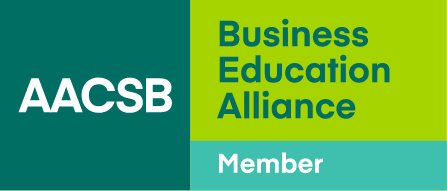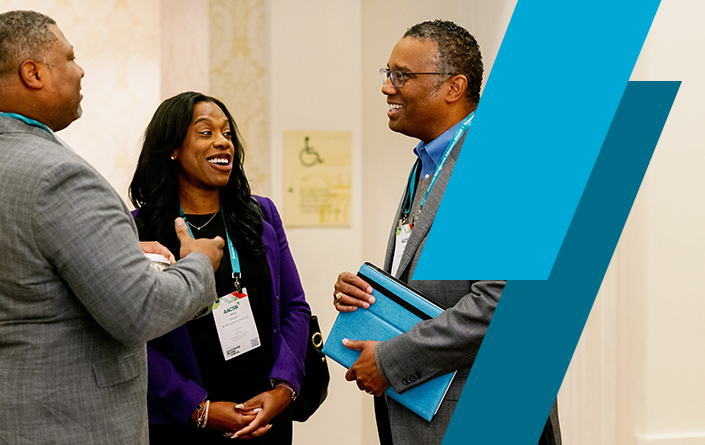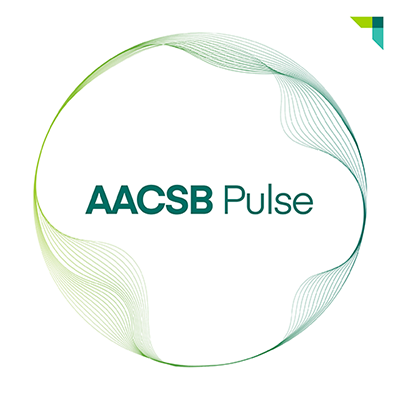Research Roundup: November 2025
Learn how blind reviews shape fairness, narratives of greed sway ambition, holistic support boosts energy, charitable gifts resonate, and AI curbs hoarding.
Dive into our monthly Research Roundup, showcasing the latest insights from the business education community to keep you informed of new and noteworthy industry trends. Here are this month’s selections:
Fairness Is Not Always Anonymous
- Researchers: Timothy J. Pleskac, Indiana University; Ellie J. Kyung, Babson College; Gretchen B. Chapman, Carnegie Mellon University; Oleg Urminsky, The University of Chicago
- Output: “Blinded Versus Unblinded Review: A Field Study on the Equity of Peer-Review Processes,” Management Science, 2025
- Overview: Across universities and organizations, people trust that peer evaluations reflect ability, not identity. Yet even structured review systems can produce uneven results. To test whether anonymity improves fairness, researchers conducted a large field experiment comparing two forms of peer review: one where author names were visible to reviewers but reviewer names were anonymous to authors (single-blind), and another where both author and reviewer names were anonymous (double-blind).
Over 500 academic submissions were randomly evaluated under both systems, giving the researchers a rare chance to compare the two blind approaches directly on the exact same work. The team assessed each method’s fairness, reliability, and validity to determine whether concealing identities produces more consistent and impartial judgments.
- Findings: The results demonstrate the instability of formal evaluation systems. When reviewers judged the same work under different conditions, they agreed on only about 40 percent of which papers deserved top ratings, meaning the final lineup would have looked entirely different under the alternate system. Single-blind reviews tended to favor submissions with senior coauthors and those led by PhD students or research scientists, while rating work from Asian first authors lower than comparable work by White peers. Under both systems, male first authors received slightly higher scores; however, papers with a higher proportion of male co-authors experienced a drop in ratings under double-blind review.
Despite these variations, neither system predicted which conference presentations drew more questions, larger audiences, or stronger quality ratings. Both, however, showed a similar ability to forecast which studies were eventually published, about 52 percent, suggesting that visibility of author identity did little to improve accuracy. For business leaders, the study highlights how identity cues can quietly shape evaluations and why decision-making systems benefit from regular review to stay fair and consistent.
When Hollywood Builds Tomorrow’s Bankers
- Researchers: Inge M. Brokerhof, Utrecht University; Omar N. Solinger, Vrije Universiteit Amsterdam; P. Matthijs Bal, University of Lincoln; P.G.W. Jansen, Vrije Universiteit Amsterdam
- Output: “The Glorification of Greed Beyond the Business School: How Popular Wall Street Narratives Relate to Future Work Selves,” Journal of Business Research, 2025
- Overview: Many people believe movies are merely entertainment, yet research reveals that they can subtly influence how viewers envision their future careers. The authors examined whether popular Wall Street stories that glorify excessive wealth influence students and financial sales employees as they picture their future work selves—the professionals they hope to become. Participants engaged with several types of narratives, including films that celebrate greed, victim accounts describing individuals harmed by financial malpractice, and clips that depict everyday work in financial sales.
The researchers sought to determine whether characters portrayed as successful, even when their behavior was morally ambiguous, would still be perceived as appealing future selves. By comparing reactions across these narrative types, they assessed how cultural storytelling relates to the shareholder value maximization logic that continues to shape business schools and the financial workplace.
- Findings: Across all three studies, narratives that glorified greed were rated more favorably on a 5-point future work-self scale than narratives that highlighted harm or showed realistic work in finance. In Study 1, students who watched The Wolf of Wall Street rated the main character, Jordan Belfort, at 2.79, often recalling scenes in which he turned penny stock calls into sudden wealth and hosted lavish office parties. Those who watched Inside Job rated its main figure at 1.93 and pointed to scenes showing executives avoiding accountability and people losing their homes or living in tents. Study 2 showed the same pattern with written stories. A chapter describing Belfort’s luxurious rise increased interest in becoming a stockbroker to 3.41, while a New York Times article about families experiencing depression and housing loss lowered that rating to 2.79.
Empathy also shifted in this study, rising from 64 percent accuracy in the winner narrative to 71 percent in the victim narrative. Study 3 found similar results among financial sales employees, who rated a 3-minute clip of Belfort throwing a watch into a cheering crowd at 3.04 compared with 2.41 for a CNN segment showing the routine and pressure-filled workday of a real stockbroker.
Together, these findings show that glamorous depictions of wealth and excitement consistently overshadow critical or realistic portrayals, which signals that the stories used in educational and workplace settings can influence how people imagine their future roles in finance.
When Support Aligns, Employees Thrive
- Researchers: Ioannis Kratsiotis, Manchester Metropolitan University; Wladislaw Rivkin, Trinity College Dublin; Nicholas Theodorakopoulos, Neapolis University Paphos; Charlotte Hohnemann, University of Wuppertal
- Output: “The Sum Is Larger Than Its Parts: The Daily Interplay of Leader and Colleague Support in Facilitating Employee Well-Being Through Balanced Needs Satisfaction and Positive Affect,” Journal of Vocational Behavior, 2025
- Overview: What happens when both leaders and colleagues offer support at work? Researchers examined this question through self-determination theory, which highlights three basic psychological needs that reinforce daily well-being: autonomy (a sense of choice), competence (a sense of effectiveness), and relatedness (a sense of connection). While earlier studies suggested that satisfying any one of these needs improves well-being, this research explored whether well-being is stronger when the three needs are satisfied in balance rather than unevenly.
To investigate this, the researchers followed 85 employees over 10 workdays and captured their daily experiences of leader support, colleague support, satisfaction of each need, balanced needs satisfaction, positive affect, and vitality at home. The goal was to understand how support throughout a workday influences the pattern of energy that emerges later that same evening at home.
- Findings: Employees reported the most balanced satisfaction of autonomy, competence, and relatedness on days when they received support from both leaders and colleagues. Colleagues played a key role in fulfilling relatedness needs through everyday social interactions, such as discussing personal issues, sharing positive experiences, or engaging in informal conversations. Whereas leaders more often supported autonomy and competence by addressing task difficulties, distributing work, and adjusting deadlines.
When these supports occurred together, employees exhibited a more even distribution of need satisfaction across the three areas, and this balanced pattern was associated with a higher positive affect at the end of the workday. This positive affect then carried into the evening, when employees reported greater subjective vitality, which the researchers defined as feeling alive, vigorous, and energized. The study found that this pathway appeared only on days with strong support from both colleagues and leaders, rather than solely from leaders.
For business leaders, strengthening leader support for autonomy and competence while encouraging colleague support for relatedness can help employees experience more balanced need satisfaction throughout the workday.
What Makes a Gift Feel Just Right
- Researchers: In-Hye Kang, California State Polytechnic University, Pomona; Hyoseok Kim, Southern Connecticut State University
- Output: “Are Charitable Gifts Truly Appreciated by the Recipients Who Requested Them? Impact of Gift Type and Amount on Recipients’ Appreciation,” Journal of Business Research, 2025
- Overview: Many people now use weddings and baby showers to raise money for causes they care about, but it remains unclear how recipients feel about these charitable gifts when they are asked for them. This research examines whether recipients’ appreciation changes depending on whether a requested cash gift benefits a cause or the recipient, and on the amount of money given.
The authors focused on rite-of-passage occasions, such as weddings and baby showers, where social norms dictate certain gift amounts as more or less appropriate. They measured how different amounts compare with what recipients expected to receive and how thoughtful the gifts seem in each situation. The goal was to identify when charitable gifts generate as much or more appreciation than personal gifts and when they do not.
- Findings: Across five studies, small cash amounts created the largest differences in how recipients evaluated gifts benefiting charitable causes versus the recipient. Using a 1-to-7 appreciation scale, in which higher numbers indicate greater appreciation, the authors found that low amounts, such as 20 or 15 USD, are often rated more positively when they support a charity than when they benefit the recipient directly.
In a wedding study, a 20 USD charitable contribution received an average appreciation rating of 6.18, whereas the same amount allocated for kitchen renovations received a rating of 5.26. In a baby shower study, a 15 USD charitable contribution was closer to meeting expectations and was seen as more thoughtful, whereas 15 USD for the recipient’s own baby items fell below expectations. Once amounts reached 50 USD or more, appreciation was similarly high for both gift types, because gifts of more than 50 USD exceeded expectations in both charitable and recipient-benefiting conditions.
Relationship closeness has shifted these patterns. When a close friend gave a 15 USD gift for a baby shower, recipients appreciated the charitable version more than the personal use version. However, when a distant friend gave the same 15 USD gift, appreciation remained high and similar for both gift types. Requesting the charitable gift also mattered, as a 15 USD charitable baby shower gift earned a 6.26 appreciation rating when requested and only 4.88 when not.
Overall, these results indicate that requested charitable gifts can enhance the giving experience, even at low amounts, whereas unrequested charitable substitutions of the same size are more likely to fall short.
The Grip That Keeps Great Ideas Stuck
- Researcher: Anil Kshatriya, ESSEC Business School
- Output: “Why Managers Hoard Knowledge and How AI Can Help Stop It,” Analytics, 2025
- Overview: Some of the smartest ideas inside a company never make it past the manager who created them. This study examines why knowledge remains stagnant despite the widespread adoption of enterprise AI and the fact that more than 79 percent of global firms have integrated AI into at least one core business function, including internal knowledge management. The central focus is on psychological ownership, the feeling that internally developed ideas reflect a manager’s identity, effort, or professional value and are therefore difficult to relinquish.
The authors examine how this attachment influences managers’ willingness to share their knowledge, even when powerful AI tools and collaboration platforms are available. They explore whether technology, on its own, can change these patterns, or shifts in culture, incentives, and visibility are necessary to unlock knowledge across units. The aim is to demonstrate how organizations can move beyond digital infrastructure alone and create conditions that facilitate the free flow of knowledge between teams.
- Findings: The results suggest that behavioral dynamics, rather than technology gaps, are the primary driver of knowledge hoarding, which occurs when managers hold on to valuable insights to protect their identity or status instead of sharing them across the organization. At Northbridge Foods, for example, FreshCart invests 20 million dollars in a rapid grocery delivery system that reduces delivery times and improves customer satisfaction, yet its manager hesitates to share the approach with a struggling sister unit because it could erode her unit’s advantage, affect her performance ranking, or reduce the credit her team receives.
This reluctance aligns with evidence that employees in competitive peer environments are 30 percent less likely to voluntarily share novel approaches, and it supports the idea that internally generated solutions become “identity assets” that people are reluctant to part with. The study also shows that AI can heighten these concerns when managers fear their hard-won insights will be extracted, replicated, or redistributed without proper credit or control.
To shift this pattern, the authors emphasize approaches that make knowledge movement visible and valued. They suggest tracking managers, teams, or units that seek and reuse internal documents. They also recommend that teams record the hardest decisions and lessons behind their work and apply social metadata to indicate when and by whom ideas are reused. In addition, they point to AI heat maps that surface “silent nodes,” or teams that rarely share or access knowledge.
For business leaders, the findings show that AI delivers its full value when paired with incentives and norms that foster curiosity, psychological safety, and collective learning, rather than just individual output.
If you have new research from your school share with the business education community, please submit a summary and relevant links to AACSB Insights via our online submission form at aacsb.edu/insights/articles/submissions.






